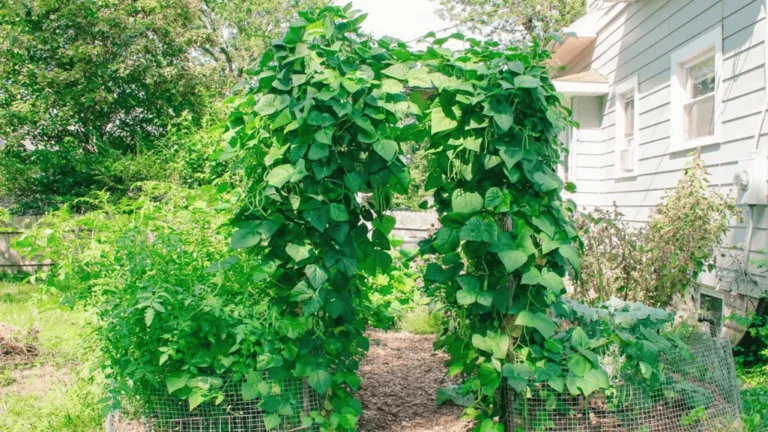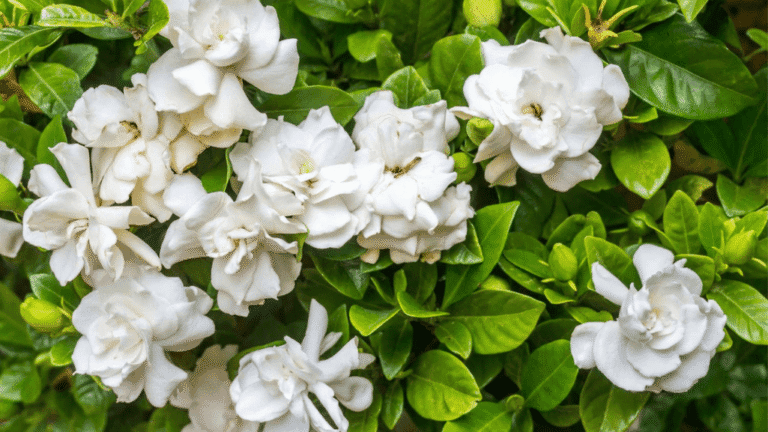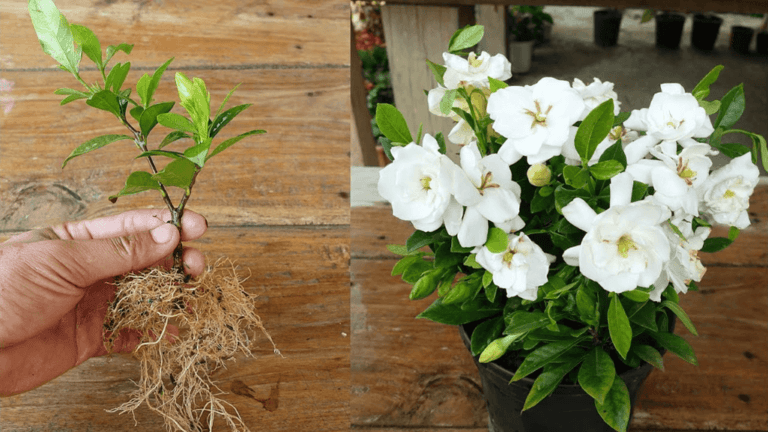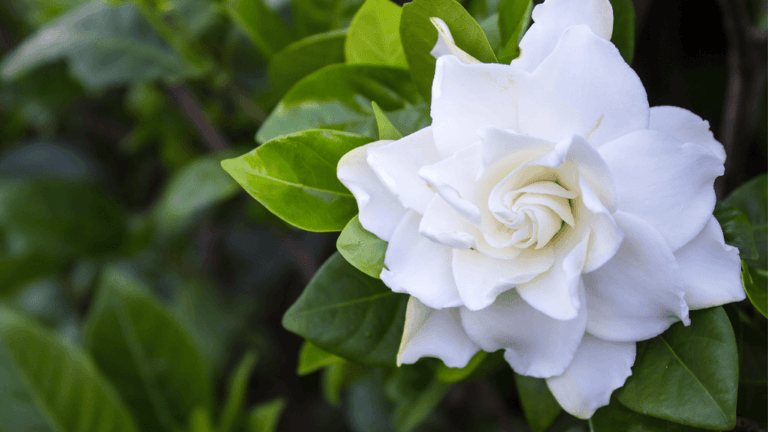Beautiful flowers gardenia Plants For Your homes

Gardenias are a true gem in any garden, with their creamy white flowers and sweet scent. This guide will help you learn how to care for gardenias. Following a few key tips can make your gardenias thrive and produce beautiful blooms. Let’s explore the best ways to keep your gardenias healthy and blooming.
Understanding what gardenias need is the first step to their success. We’ll cover their unique needs and how the environment and care affect them. For more tips, check out this guide on growing and caring for. It’s full of useful advice to help you in your gardening.
Key Takeaways
- Ideal soil pH for gardenias is between 5.0 and 6.5, an acidity that allows for optimal nutrient absorption.
- Understanding the delicate balance of watering, which ranges from 2 to 4 times a week based on weather conditions, is critical for gardenia health.
- Correct sun exposure, entailing 3 to 6 hours of direct light, is essential for promoting full blooms and dense foliage.
- Regular maintenance, including bi-annual cleaning and pruning, encourages robust growth in gardenias.
- As gardenias are perennial evergreen shrubs, selecting a variety suited to your regional climate zone (7 to 11) greatly affects the plant’s success.
- Staying vigilant about pests such as whiteflies and Japanese wax scales ensures the long-term health and beauty of your gardenias.
Understanding the Basics of Gardenias Care
To keep a gardenia healthy, it’s key to know its sunlight and watering needs. Also, understanding the general care tips is important. By doing this, you can enjoy the beautiful, fragrant flowers that gardenias are famous for.
Optimal Light Conditions for Gardenia Health
Gardenias need certain lighting to grow well. They should get about 4 to 6 hours of sunlight each day. This is important for their growth and for the flowers to bloom well.
But, they should avoid the strong afternoon sun to prevent damage to their flowers. The best spot is where they get filtered sunlight in the afternoon.
The Importance of Watering Regimens
For gardenias, watering regularly is crucial. Water them when the top inch of soil feels dry. Give them about an inch of water each week.
This keeps the soil moist but not too wet. It helps prevent root rot and other problems caused by too much water.
| Aspect | Requirement | Details |
|---|---|---|
| Sunlight | 4-6 hours daily | Full sun to partial shade; protection from intense PM sun |
| Watering | 1 inch per week | Soil should be consistently moist, not waterlogged |
| Soil pH | 5.0 to 6.5 | Acidic soil conditions preferred |
| Temperature | 60ºF to 70ºF | Optimal growth temperature range during the day |
| Humidity | Around 60% | Crucial for preventing bud drop and encouraging healthy blooms |
To make sure your gardenia plants do well, follow these best tips for gardenia care. These are helpful whether you’re an experienced gardener or just starting out. Knowing these basics will help you grow gardenias that are both lively and healthy.
Selecting the Right Soil for Thriving Gardenias
For gardenia lovers, finding the right soil is key to getting beautiful blooms. These plants need certain conditions to do well, like the right soil mix and pH levels. Getting this right helps plants stay healthy and boosts bloom quality.
The perfect gardenias soil pH is between 5.0 and 6.5. This acidity helps gardenias get the nutrients they need, especially iron. Iron is key for keeping leaves green and preventing leaf chlorosis. To get the pH right, you might need to add certain substances, especially if your soil is too alkaline.
- Organic Material: Adding compost or peat moss to the soil helps keep it acidic and rich.
- Proper Drainage: Gardenias like moist soil but hate standing water. A good drainage system stops root rot and helps roots grow strong.
- Regular Testing: Soil tests show you the pH and nutrient levels. This helps you make precise changes if needed.
For top-notch care for your gardenias, follow these tips:
- Amend Regularly: Use sulfur or aluminum sulfate to lower the soil’s pH if it’s too high.
- Mulch: Mulching with organic materials keeps the soil moist, cool, and weed-free.
- Water Wisely: Water your gardenias often to keep the soil moist but don’t overdo it to avoid diseases.
By following these tips and keeping an eye on the gardenias soil pH, you can make a great home for your gardenias. If you’re new to adjusting soil pH, getting advice from a local gardening expert can be very helpful.
Maintaining Ideal Temperatures for Gardenia Blooms
Gardenias are known for their beautiful, fragrant flowers. But, they need specific temperatures all year to bloom well. Keeping the right temperature day and night helps them grow and bloom better.
Night and Day: Balancing Gardenia Temperature Needs
For gardenias inside, keep the day warm between 70°F to 80°F. This helps them grow and bloom well. At night, keep it cooler, from 55°F to 65°F, to help buds form. This balance is key to avoiding bud drop, which happens if it’s too warm at night.
Preparing for Seasonal Temperature Shifts
Indoor gardenias face challenges with heating in winter and air conditioning in summer. These changes can mess with their temperature needs. Gardeners should put their gardenias in spots with less temperature change—like near windows or in rooms with steady temperatures.
In winter, make sure your gardenia gets enough light and warmth. Place it in a sunny, southern-facing window to keep it happy.
| Season | Day Temperature (°F) | Night Temperature (°F) | Special Notes |
|---|---|---|---|
| Spring/Summer | 70-80 | 55-65 | Maintain high humidity |
| Fall/Winter | 65-75 | 60-62 | Place in sunny, southern-facing windows |
By watching and adjusting the temperature, you help your gardenias stay healthy and bloom well. This is important for any indoor gardenia care plan.
Nourishing Your Gardenias with the Right Fertilizer
Gardenias need the right food to stay beautiful. They have different needs based on the type. For example, Gardenia volkensii does well with certain types of fertilizer during the blooming season.
Organic fertilizers like blood meal or fish emulsion are good for gardenias. They release nutrients slowly and help the soil. This makes the soil healthy for a long time.
Synthetic fertilizers work faster but should be used carefully. They can harm the soil if used too much. Look out for signs like yellow leaves or brown tips.
It’s important to use the right amount of fertilizer. Use half the amount of synthetic fertilizers recommended. This prevents the roots from getting damaged by too many nutrients.
When to fertilize is also key. Fertilize in the spring when gardenias grow the most. This makes sure they get nutrients when they need them most.
Regular monitoring and adjustment of fertilizer applications, akin to fine-tuning a mix by a DJ, are paramount in responding to the gardenia’s feedback and preventing stress on the plant.
Keeping the soil a bit acidic is important for gardenias, especially if they’re in pots. Make sure pots have good drainage and enough room. Adding things like compost can also help with nutrients.
Knowing how to fertilize your gardenias right can make them bloom better. It ensures you get to enjoy their beauty more.
Mastering the Gardenias Watering Schedule
Getting the watering right is key to making gardenias bloom well and stay healthy. It’s important to know how much water they need to avoid root rot and encourage strong roots. The goal is to water deeply and let the soil dry out a bit, which helps the roots grow strong.
Usually, gardenias need about an inch of water each week. But this can change with the weather and season. For more specific advice on watering gardenias in different places, check out the detailed info at UF/IFAS Gardening Solutions.
Deciphering Moisture Levels for Optimal Hydration
It’s important to check the soil moisture to know when to water your gardenias. You can use a digital moisture meter for accurate readings. Or, you can check the soil by feeling it; it should be moist but not soaked a few inches down. Too much water can make the leaves turn yellow, while too little can make them dry and crispy.
Implementing Even Moisture Distribution Techniques
To make sure the soil gets water evenly, water your gardenias slowly and deeply. This lets the water go deep to the roots without washing away the surface. Adding mulch around your gardenias helps keep the soil moist and cuts down on watering by reducing evaporation.
Adjusting your watering schedule with the seasons is crucial. Gardenias might need more water in hot, dry summers and less in cool winters. Watch the weather and adjust your watering to keep your gardenias happy all year.
In conclusion, getting the watering right for gardenias means paying attention to the environment and their needs. With consistent care that fits their changing needs, you’ll enjoy their beautiful, fragrant blooms.
The Role of Humidity in Gardenias Care
When you care for gardenias indoors, keeping the right humidity is key. It helps them grow well and bloom beautifully. It’s important to keep humidity at the best levels for a healthy plant.
Gardenias do best in a humid environment with levels of 50-60%. This is crucial indoors, where air can get too dry. This happens a lot in homes with central heating or air conditioning.
To keep the humidity right for gardenias, there are a few things you can do. Using a humidifier is a good idea. It helps control the moisture in the air. Or, you can try a natural way by placing a tray of water with pebbles under your gardenia pot. This also helps increase the humidity around the plant.
| Method | Description | Benefits |
|---|---|---|
| Humidifier | Electronic device that emits water vapor to increase humidity | Direct control over humidity levels, easily adjustable |
| Water Tray with Pebbles | A tray filled with water and pebbles that holds the gardenia’s pot | Natural evaporation enhances surrounding humidity; decorative |
Keeping the humidity right helps gardenias grow well and bloom more. It also keeps pests away, as they like dry air. So, managing humidity well is good for the plant and helps fight pests. This makes caring for gardenias indoors more effective.
Pruning Practices for Healthy Gardenias Growth
Pruning is key to keeping your gardenias healthy and looking great. This guide will show you how to prune your gardenias for beautiful blooms.
Timing Your Gardenias Pruning for Lush Blooms
Pruning at the right time is crucial for lots of blooms. Prune in late winter or early spring to get ready for the growing season. Pruning too late can cut off flower buds, reducing blooms.
Techniques for Effective Gardenias Trimming
Pruning your gardenias right makes them look better and grow stronger. Use sharp tools like secateurs, loppers, and a pruning saw for different parts of the plant. Here are key pruning tips:
- Rejuvenation: Cut back overgrown gardenias to a leaf node or bud to make them grow back strong.
- Thinning: Remove too many branches to let air and light in, which fights disease.
- Heading Back: Prune branches to shape the plant and make it bushier.
- Deadheading: Remove dead flowers to keep blooms going longer.
When pruning, cut at a 45-degree angle just above a stem or leaf node. This helps the plant heal and grow back well. Check and remove any sick or damaged parts to keep your gardenia healthy.
Follow this guide to make your gardenias look great and stay healthy. Each cut you make affects how your gardenias grow, so prune thoughtfully. Think of pruning as sculpting your garden’s masterpiece.
The Essential Steps in Gardenias Repotting
For garden lovers, proper gardenia plant maintenance is key to keeping these lovely flowers healthy. Repotting is crucial for their growth and blooming. Knowing when and how to repot gardenias helps keep them beautiful and healthy.
It’s best to repot gardenias every two years. This refreshes the soil and helps them grow. Gardenias like the Gardenia ‘Florida’ slow down when they get too big for their pots. Choosing a pot that’s only 1 to 2 inches bigger is important. This size lets them grow without risking root rot from too much water.
When repotting, use a rich, well-draining potting mix and terracotta pots work well. After moving the plant, water it well to help it settle and prevent air pockets around the roots. Bright, indirect light after repotting helps your gardenia adjust without stress from direct sunlight.
For long-term care, keep the soil acidic, with a pH of 5 to 6, for better nutrient uptake. Using tropical gardening tips can also make your gardenias more vibrant and healthy, especially in zones 9 and 10. Regular watering, enough sunlight, and balanced fertilizing are key to keeping gardenias thriving.
Remember, the environment matters a lot. Protecting your gardenia from drafty windows in cold areas or mulching in zone 7 during winter helps their health and blooms.
Guarding Against Common Gardenias Pests and Diseases
To keep your gardenias looking great, it’s key to focus on gardenias pests prevention and gardenias diseases treatment. These steps help spot problems early and offer solutions, both organic and chemical, to keep your plants healthy.
Early Identification of Gardenias Health Threats
Spotting pests like aphids early can stop big damage. Look out for yellow leaves or sooty mold to catch nematodes or fungal infections. Checking for dropped flower buds or stem canker signs helps you act fast.
Organic and Chemical Solutions for Gardenias Care
For natural care, neem oil and horticultural oils are great for fighting pests and diseases without harsh chemicals. Use horticultural oils every five to six weeks in a 1 or 2% mix to control armored scales. For fungal issues, mixing horticultural oil with baking soda can fight powdery mildew in late summer.
When you need chemicals, products with myclobutanil, thiophanate-methyl, or chlorothalonil can tackle severe diseases like Phytophthora. Always follow the product’s instructions and think about the environment before using chemicals.
Managing and preventing gardenias diseases and pests means regular checks and quick action when problems start. Use organic or chemical treatments as needed to keep your gardenias healthy and beautiful.
Gardenias Propagation for Continuous Beauty
Starting a gardenia plant is rewarding, watching your plants grow and flourish. First, pick a healthy parent plant and cut a 6-8 inch stem at a 45° angle. This step is key for new growth and follows expert gardenia care advice. Then, treat the stem with rooting hormone and plant it in well-draining soil for success.
Gardenias do best in USDA zones 8-10, liking moderate climates. They can also grow indoors in cooler areas with the right care. Keeping the area humid until roots form, which takes about 6-8 weeks, is vital. It’s important to keep the soil moist but not waterlogged, mimicking their natural environment.
Special care is crucial for gardenias, especially when propagating. Use room-temperature distilled water to prevent fungus and watch the plant closely. Feeding with specific fertilizers like 6-6-6 or 20-20-20 is important. Adding coffee grounds is also good because it adds nitrogen, which gardenias need.
Experiences from gardenia growers show the need for consistent care. This is backed by University of Florida’s expert guide. The guide explains how the right environment is key from planting to blooming.
| Aspect | Requirement | Advice |
|---|---|---|
| Soil Type | Acidic (pH 5-6) | Use coffee grounds to enrich soil |
| Watering | Every few days in dry periods | Use room-temperature distilled water |
| Fertilization | Every three weeks with acid-based fertilizer | Choose between 6-6-6, 10-10-10, 20-20-20, 16-4-8 |
| Propagation | High humidity until roots develop | Maintain consistent moisture levels |
| Pest Management | Control of whiteflies, mealybugs, aphids | Use horticultural oil; avoid over-watering and crowding of plants |
Continued expert gardenia care advice is key for those wanting to add gardenias to their garden. Propagation is more than gardening; it’s a craft of careful and patient nurturing.
Conclusion
We’ve explored the world of gardenia care essentials and found out how amazing these evergreens are. With about 140 species, Gardenia shows off its beauty and flexibility. The ‘Kleim’s Hardy’ is a great example, created by Don Kleim.
Gardenias need a special place to grow well. They love a warm, humid spot with acidic soil and a pH of 5.0 to 6.0. These plants can grow 2-4 feet tall and wide, with some like ‘Veichii’ and ‘Radicans’ being a bit bigger. They do great outside but can also brighten up your indoor space if kept moist and cared for.
In Lafayette, LA, which is in Zone 9a, it’s important to plant gardenias 3 to 6 feet apart. Make sure the soil is right for them. Pruning in spring helps them grow strong and bloom more the next year. With the right care, gardenias will be a beautiful part of your garden for many years.


























